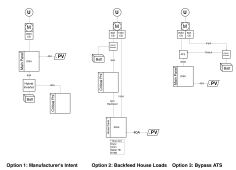I am planning on adding a hybrid inverter to my system and am trying to decide if an automatic transfer switch to bypass the inverter "output" in normal operation is a good idea or not. I have a 200A service and am looking at a 6-8kW inverter with an internal 60A transfer switch. Currently our house can peak at about 70A (5-second average) when on-grid and not watching things.
Any arguments pro or con?
[edit] Post 10 has a schematic of what I understand my options to be.
Any arguments pro or con?
[edit] Post 10 has a schematic of what I understand my options to be.
Last edited:



